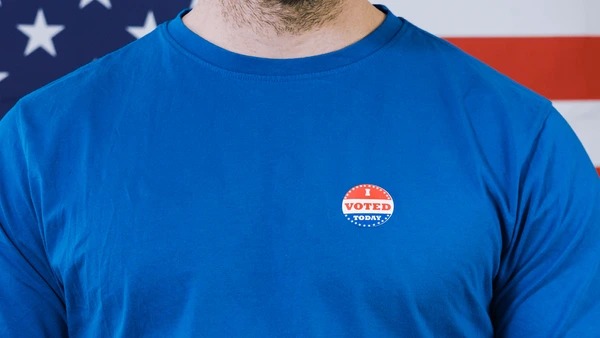In recent months, the rise of synthetic media has forced us to confront a chilling question: Deepfakes and the Death of Truth: Are We Ready? As artificial intelligence tools become cheaper, faster, and more accessible, the boundary between genuine and fabricated content is swiftly eroding.
What Are Deepfakes, and Why Now?
Deepfakes are AI-generated videos, images, or audio that convincingly replace one person’s likeness with another’s. Originally a research curiosity, deepfake technology has become mainstream thanks to powerful models and user-friendly apps. Previously, creating a realistic deepfake required high-end hardware. However, today, anyone with a smartphone can generate content that mimics real people’s voices or faces in minutes. Consequently, millions of synthetic videos flood the internet—estimates indicate the number of deepfakes shared worldwide may reach 8 million by the end of 2025.
Thus, the broader question looms larger than ever: Deepfakes and the death of truth: Are we ready? We must unpack this issue across social, political, legal, and technological dimensions.
The Political Toll: Trust at Risk
Deepfakes have already been weaponized in elections, particularly in Europe and Asia. For instance, during the 2025 Canadian campaign, AI-generated videos alleged provocative statements by major politicians designed to mislead voters. Similarly, the Czech and Slovak elections suffered fake audio clips broadcast across social media.
Furthermore, beyond individual fake clips, we now face the “liar’s dividend”: even authentic footage can be dismissed as AI fakery. The result? Cynicism, paralysis, and potential democratic collapse. As such, deepfakes and the death of truth: are we ready? Becomes more than rhetorical—it’s a battle cry for civic resilience.
Corporate Risks: Fraud at Scale
Meanwhile, in the corporate world, deepfakes and the death of truth: are we ready, is no less pertinent. Fraudsters use AI tools to mimic CEOs on video calls, persuade finance teams to transfer money, or create fake ID passes to access secure facilities. Estimates warn of $12 billion lost to synthetic media scams, which may balloon to $40 billion in the coming years.
Security teams are scrambling—some are deploying multimodal detectors, watermarks, and biometric verification systems. Yet, attackers evolve as fast; detection methods that once achieved 90% accuracy now falter in real-world conditions. Deepfakes and the death of truth: Are we ready? It’s not a question—it’s imperative for businesses worldwide.
Legal and Ethical Responses: Legislation in Motion
Recognizing the stakes, governments are enacting new laws. In the U.S., the TAKE IT DOWN Act took effect in May 2025. The law requires platforms to remove nonconsensual intimate deepfake content—commonly revenge porn—within set timeframes. Meanwhile, Denmark plans to ban the spread of all types of deepfakes by late 2025 or early 2026, with fines and compensation under consideration. Globally, other proposals include tech companies disclosing AI-generated content and labeling media accordingly.
These interventions indicate the question of deepfakes and the death of truth: Are we ready? Resonates not just in blogs, but in boardrooms, courtrooms, and parliaments. However, legislation alone won’t suffice. It’s part of a multi-pronged approach that includes policy, tech, and grassroots.
The Human Factor: Media Literacy and Awareness
Still, law and tech are only pieces. Ultimately, societal resilience will depend on public awareness. A UK survey found over 90% of respondents expressed concern about deepfakes in areas like pornography, health disinformation, and political messaging. Yet only 8% said they’d ever created one.
Thus, expanding digital literacy is critical. People need training to question plausibility, verify sources, and apply skepticism to sensational content. This is essential if we want to answer: Deepfakes and the death of truth: are we ready? With a resounding yes.
The Tech Race: Detect Before You Squash
On the technical front, researchers are racing to develop solutions. Automated forensic tools use deep learning to spot tiny visual artifacts or inconsistencies unnoticeable to the human eye. Other innovations include blockchain-based provenance systems that record the creation history of media assets, and algorithms that embed invisible watermarks to trace AI-generated images.
Even social networks like X, TikTok, and Facebook have implemented synthetic media policies, auto-labeling manipulated content. Still, critics argue that those policies need better enforcement and sophistication.
The Justice System: Redefining Evidence
Deepfake misuse isn’t only about misinformation; it can upend justice. Defense attorney Jerry Buting warns that fake CCTV or audio could convict innocent people. While forensic experts adapt, the legal system must evolve: judges, jurors, and attorneys must learn to scrutinize digital evidence more critically.
Not only does it test our general awareness, but it also tests our institutional safeguards.
Mobilize—or Decline
The implications of deepfakes ripple across society. From elections and corporate fraud to privacy violations and courtroom drama, the artificial world is flooding our reality. So, deepfakes and the death of truth: Are we ready?, is not academic—it’s practical. Without awareness, legislation, tech defenses, and literacy, we risk sliding into a “post-truth” age where seeing is no longer believing and trust becomes trust-less.
Yes, we must be ready. And not later, but now.
Fast Facts At A Glance:
| Type | Threat | Defensive Angle |
| Political | Synthetic audio/video in elections | Disclosure laws + campaign fact-checking |
| Corporate | CEO impersonation for fraud | Biometric/semantic verification + employee training |
| Personal | Deepfake pornography (revenge porn) | Quick takedown laws + platform accountability |
| Judicial | Fabricated evidence in courts | Forensic analysis + legal standards upgrade |
In closing, deepfakes and the death of truth: are we ready? It’s more than a headline—it’s a call to action. As AI-generated fakes proliferate, every individual, organization, and institution must play a role. Together, only through coordinated vigilance, innovation, and governance can we protect truth in an increasingly artificial world.

















Leave a comment